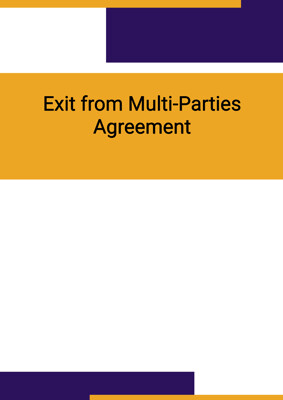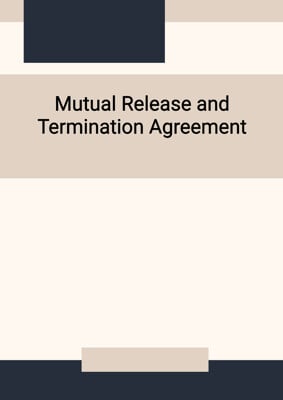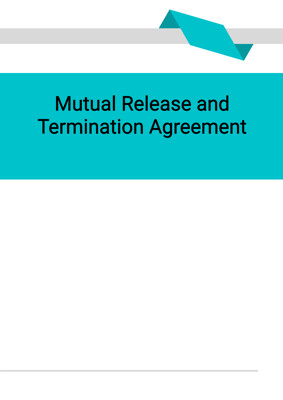
Guarantee and Indemnity
Counter Indemnity
A Counter indemnity allow a guarantor to seek reimbursement from the indemnifier in the event where they have to pay a guarantee claim for any part of the guarantee amount that they must pay in the event of a default in the primary agreement. They also act as an indemnity for guarantors from any claims, liabilities or losses which may result from the original guarantee.
How to Tailor the Document for Your Need?
01
Create Document
Fill in the details of the parties. You can click the "Fill with Member’s Information" button to complete it with information saved to your account.
02
Fill Information
Please fill in any additional information by following the step-by-step guide on the left hand side of the preview document and click the "Next" button.
03
Get Document
When you are done, click the "Get Document" button and you can download the document in Word or PDF format.
04
Review Document
The document should be signed by the authorised signatory (or directors of a company) and witnessed to complete the formality.
Document Preview
Document Description
The document titled 'Guarantee and Indemnity' is a counter indemnity agreement made between Party 1 (referred to as the 'indemnifier') and Party 2 (referred to as the 'guarantor'). The document is of utmost importance as it establishes the terms and conditions for the guarantee provided by the guarantor to the bank on behalf of the indemnifier.
The detailed introduction of the entire document includes the following:
The document begins by stating the date and the parties involved, namely the indemnifier and the guarantor. It then provides a background context, explaining that the bank has entered into a loan agreement with the borrower at the request of the indemnifier. The indemnifier has requested the guarantor to provide a guarantee to the bank, and the guarantor has agreed to do so on the condition that the indemnifier enters into this counter-indemnity.
The document consists of several sections, each serving a specific purpose. The interpretation section defines key terms used throughout the document, such as 'bank,' 'financing documents,' 'guarantee,' 'indemnified amount,' and 'loan agreement.' The interpretation section also clarifies the meaning of certain terms, such as the use of singular and plural forms.
The counter-indemnity section outlines the indemnifier's undertaking to the guarantor. It states that the indemnifier will pay the guarantor the amount equal to any indemnified amount and fully indemnify the guarantor and the bank against any losses, claims, costs, charges, and expenses related to the guarantee or the indemnified amounts.
The continuing indemnity section emphasizes that the indemnity provided by this counter-indemnity is ongoing and extends to the ultimate balance of the indemnified amounts, regardless of any intermediate payments or discharges.
The discharge and release section clarifies that the indemnifier cannot terminate this counter-indemnity. However, if the indemnified amounts have been fully paid, the guarantor may, at the indemnifier's request and cost, discharge or release the indemnifier by written instrument, subject to certain conditions.
The demands section highlights that demands under this counter-indemnity can be made at any time, and the indemnifier's liabilities and obligations can be enforced irrespective of any demands, steps, or proceedings against the borrower, guarantor, or any third party, or the enforcement of any security.
The representations and warranties section states that the indemnifier has disclosed all material facts to the guarantor and warrants that the transactions contemplated in this counter-indemnity are of a purely commercial nature.
The undertakings section outlines various undertakings of the indemnifier, including incorporating appropriate undertakings from the loan agreement, refraining from seeking recovery without the guarantor's consent, and not claiming as a creditor in competition with the guarantor.
The suspense account section allows the guarantor to place and keep any amounts received under this counter-indemnity to the credit of an account of the indemnifier or any other person chosen by the guarantor.
The certificates section states that a certificate issued by the guarantor regarding the amount of indemnified amounts shall be conclusive evidence against the indemnifier, unless there is a manifest error.
The severability section ensures that if any provision of this counter-indemnity becomes invalid, illegal, or unenforceable, it will not affect the validity, legality, and enforceability of the remaining provisions.
The document concludes with a clause stating that no third party has the right to enforce any terms of this counter-indemnity and a jurisdiction and waiver clause, specifying the jurisdiction and waiving objections to the jurisdiction of the courts.
Each section of the document serves a specific purpose and contributes to the overall understanding and enforceability of the counter-indemnity agreement.
How to use this document?
To use the 'Guarantee and Indemnity' document effectively, follow the step-by-step guidance below:
1. Read and understand the entire document, including the detailed description and guidance sections, to familiarize yourself with the purpose and terms of the counter-indemnity agreement.
2. Identify the parties involved: The indemnifier refers to Party 1, and the guarantor refers to Party 2. Ensure that you have the correct information for both parties.
3. Interpret key terms: Familiarize yourself with the definitions provided in the interpretation section, such as 'bank,' 'financing documents,' 'guarantee,' 'indemnified amount,' and 'loan agreement.'
4. Understand the indemnifier's undertaking: The indemnifier agrees to pay the guarantor the amount equal to any indemnified amount and fully indemnify the guarantor and the bank against any losses, claims, costs, charges, and expenses related to the guarantee or the indemnified amounts.
5. Note the continuing indemnity: The indemnity provided by this counter-indemnity is ongoing and extends to the ultimate balance of the indemnified amounts, regardless of any intermediate payments or discharges.
6. Be aware of discharge and release conditions: The indemnifier cannot terminate this counter-indemnity, but the guarantor may discharge or release the indemnifier if the indemnified amounts have been fully paid, subject to certain conditions.
7. Understand the demands section: The indemnifier's liabilities and obligations under this counter-indemnity can be enforced at any time, regardless of any demands, steps, or proceedings against the borrower, guarantor, or any third party, or the enforcement of any security.
8. Consider representations and warranties: The indemnifier must disclose all material facts to the guarantor and warrants that the transactions contemplated in this counter-indemnity are of a purely commercial nature.
9. Take note of the undertakings: The indemnifier must incorporate appropriate undertakings from the loan agreement, refrain from seeking recovery without the guarantor's consent, and not claim as a creditor in competition with the guarantor.
10. Understand the suspense account provision: The guarantor may place and keep any amounts received under this counter-indemnity to the credit of an account of the indemnifier or any other person chosen by the guarantor.
11. Consider the certificates section: A certificate issued by the guarantor regarding the amount of indemnified amounts is conclusive evidence against the indemnifier, unless there is a manifest error.
12. Be aware of the severability clause: If any provision of this counter-indemnity becomes invalid, illegal, or unenforceable, it will not affect the validity, legality, and enforceability of the remaining provisions.
13. Understand the jurisdiction and waiver clause: The guarantor may choose to take proceedings in the courts of any jurisdiction, including the courts of the jurisdiction state to which the indemnifier submits.
By following these steps, you can effectively use the 'Guarantee and Indemnity' document and ensure compliance with its terms and conditions.
Not the right document?
Don’t worry, we have thousands of documents for you to choose from:
















